
From the frozen landscapes of Antarctica to the scorching deserts of Africa to the often drought-stricken regions of North America, areas that get little to no rainfall tend to have harsh environments.
To identify the driest places on Earth, 24/7 Wall St. reviewed average annual rainfall recorded by weather stations around the world and compiled by the Global Historical Climatology Network, a program of the National Centers for Environmental Information (NCEI).
We calculated the average annual rainfall from precipitation in the years 1997 through 2018. Weather stations that did not have at least five years of data available between 1997 and 2018 were not considered.
While many such hostile regions of the planet are barren of all life, many have been inhabited for millennia.
Most of these places are in Algeria, Egypt, and other countries along the southern coast of the Mediterranean. Six of the 50 driest places on Earth receive an average of less than 1 inch of rain each year.
Click here to see the driest places on Earth.
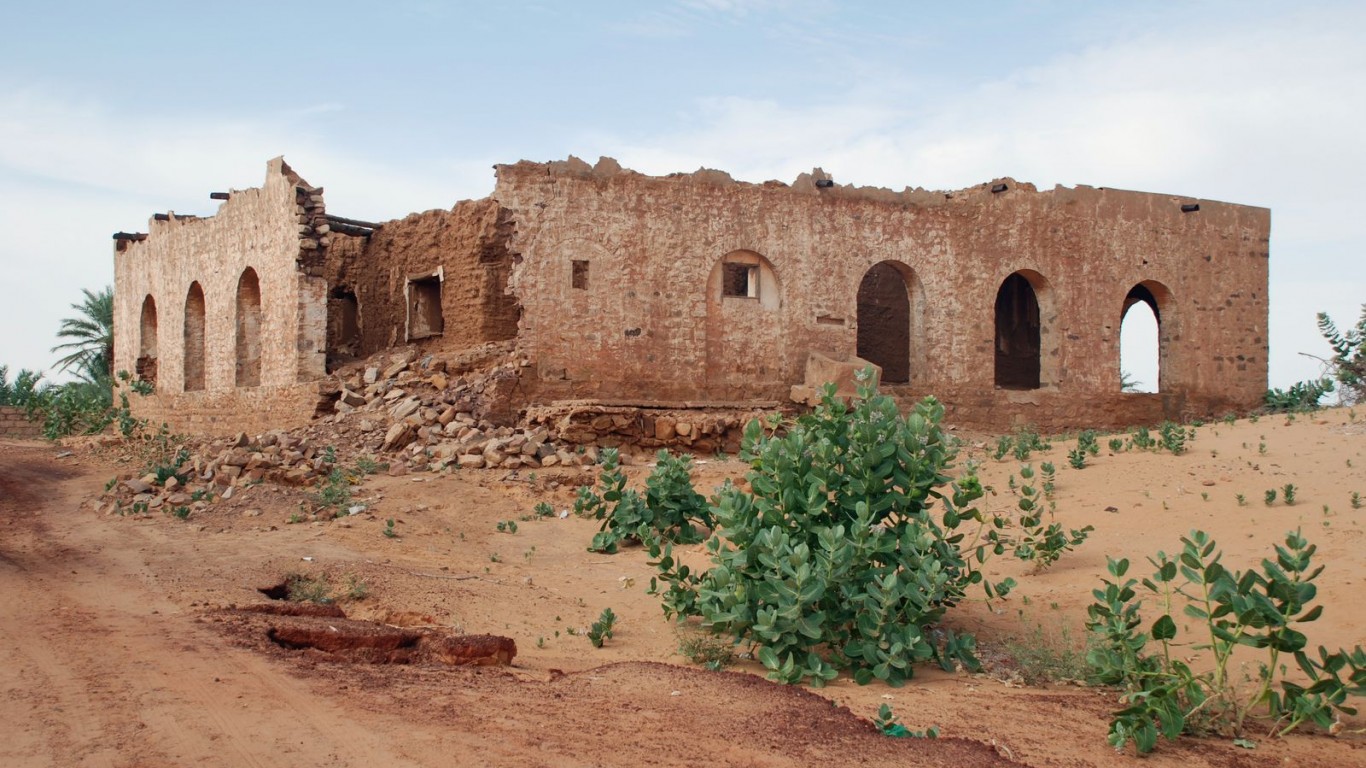
50. Tidjikja, Mauritania
> Annual average precipitation (16 years of data): 1.2 inches
> Driest year in database: 2010, 4.6 inches
> Driest month on average: August, 2.3 inches
[in-text-ad]
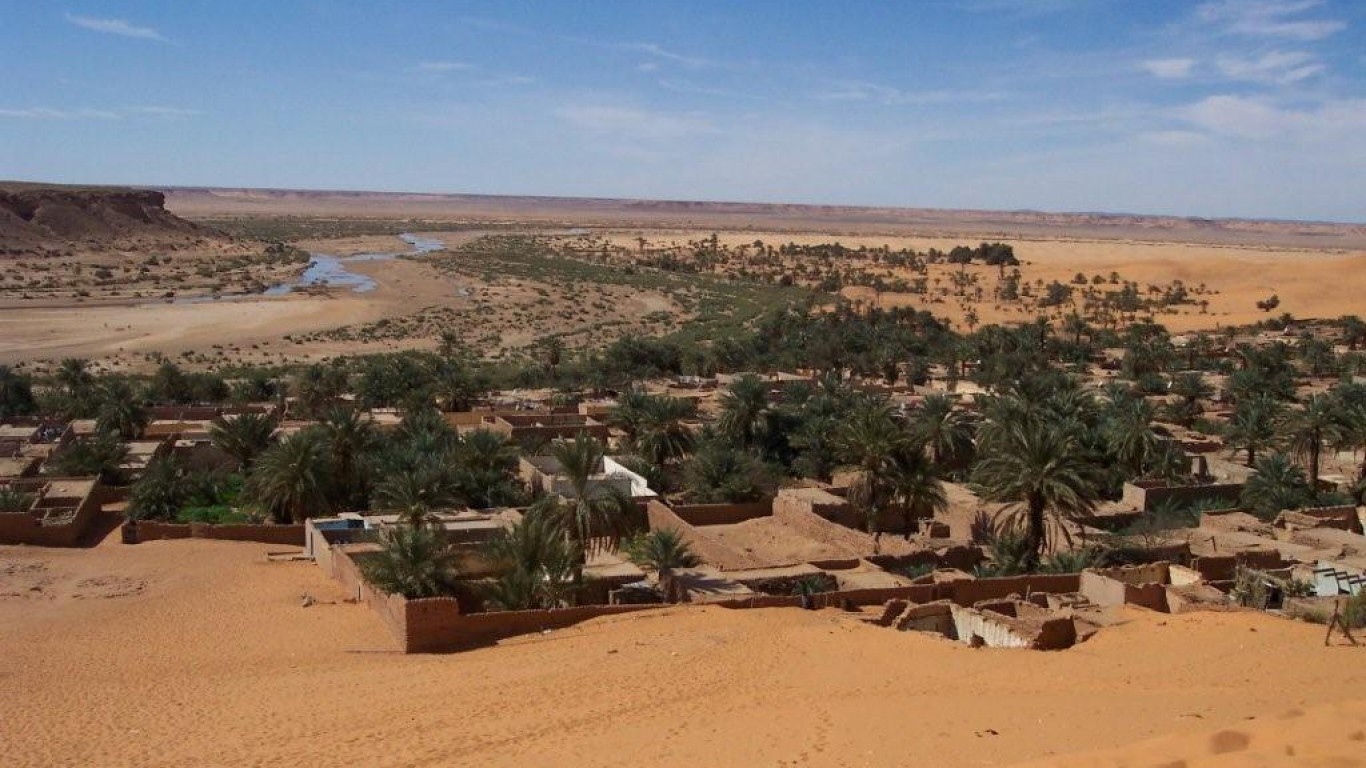
49. Béni Abbès, Algeria
> Annual average precipitation (22 years of data): 1.2 inches
> Driest year in database: 2009, 4.1 inches
> Driest month on average: October, 0.4 inches

48. Indio, CA, United States Of America
> Annual average precipitation (10 years of data): 1.2 inches
> Driest year in database: 2004, 2.9 inches
> Driest month on average: December, 0.3 inches

47. Pay Menar, Afghanistan
> Annual average precipitation (5 years of data): 1.1 inches
> Driest year in database: 2016, 1.7 inches
> Driest month on average: December, 0.8 inches
[in-text-ad-2]

46. Al Wajh, Saudi Arabia
> Annual average precipitation (22 years of data): 1.1 inches
> Driest year in database: 2013, 3.3 inches
> Driest month on average: January, 0.4 inches

45. Fallon, NV, United States Of America
> Annual average precipitation (6 years of data): 1.0 inches
> Driest year in database: 1997, 4.5 inches
> Driest month on average: June, 1.2 inches
[in-text-ad]

44. Wake Island, United States Of America
> Annual average precipitation (11 years of data): 1.0 inches
> Driest year in database: 1997, 6.2 inches
> Driest month on average: May, 0.6 inches

43. Ruoqiang, China
> Annual average precipitation (22 years of data): 0.9 inches
> Driest year in database: 2003, 2.2 inches
> Driest month on average: June, 0.4 inches
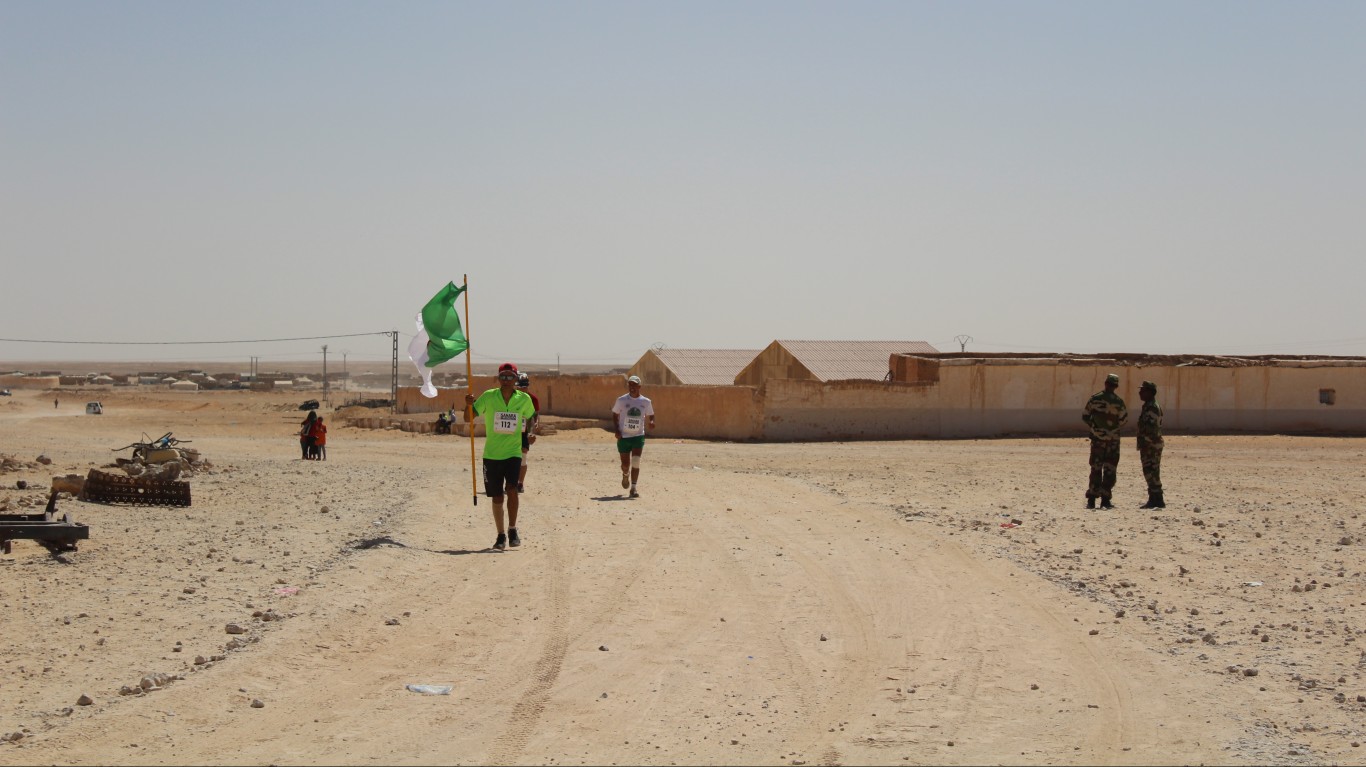
42. Tinduf, Algeria
> Annual average precipitation (8 years of data): 0.9 inches
> Driest year in database: 2003, 3.2 inches
> Driest month on average: October, 1.5 inches
[in-text-ad-2]
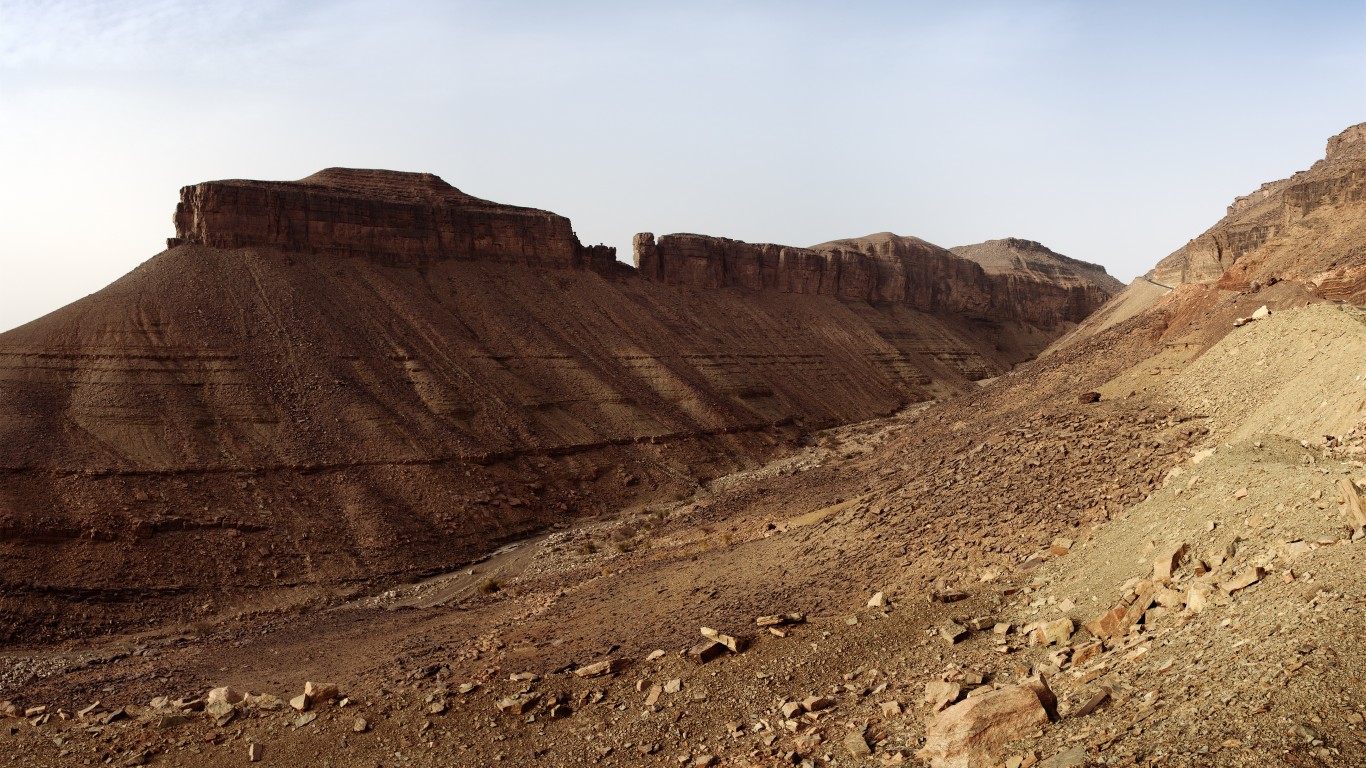
41. Atar, Mauritania
> Annual average precipitation (9 years of data): 0.9 inches
> Driest year in database: 2008, 2.1 inches
> Driest month on average: September, 1.3 inches
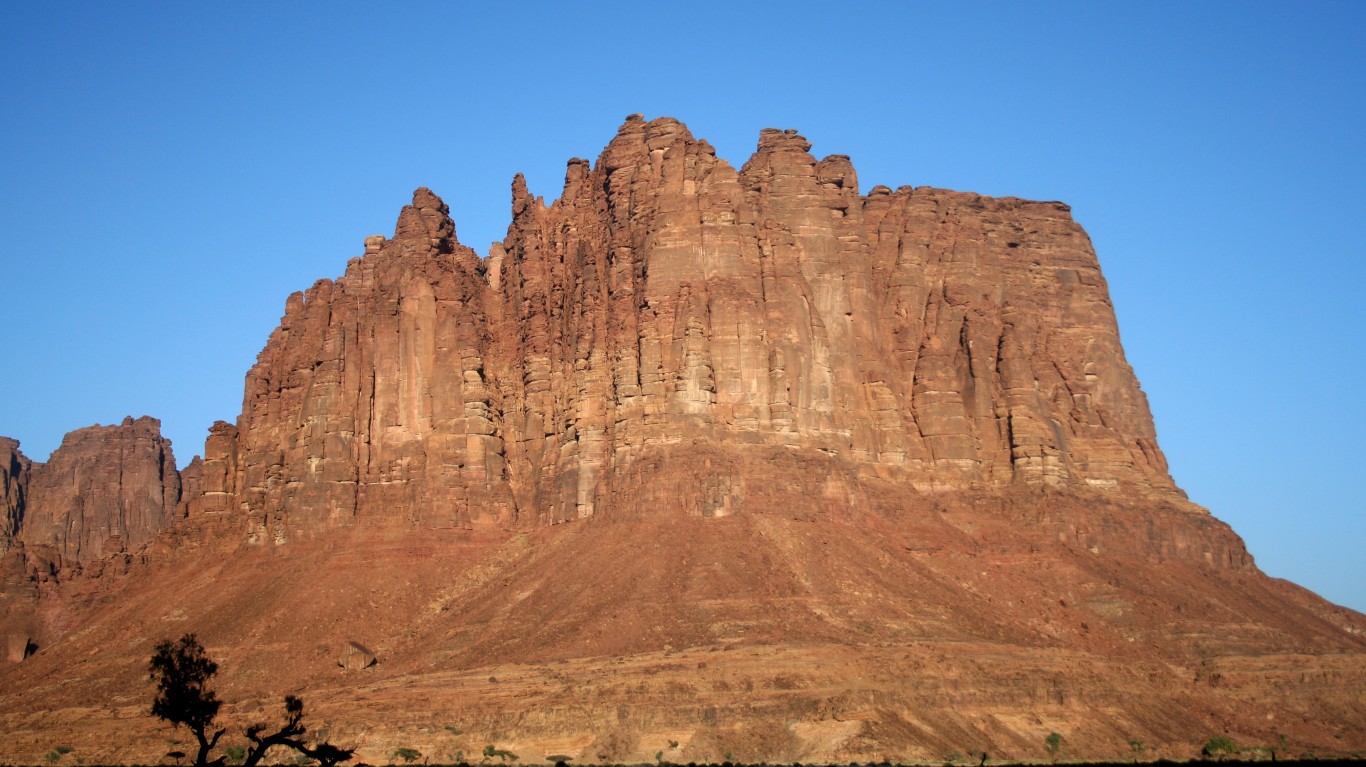
40. Tabuk, Saudi Arabia
> Annual average precipitation (22 years of data): 0.9 inches
> Driest year in database: 2015, 2.2 inches
> Driest month on average: January, 0.4 inches
[in-text-ad]

39. Copiapó, Chile
> Annual average precipitation (10 years of data): 0.9 inches
> Driest year in database: 2004, 3.0 inches
> Driest month on average: June, 0.5 inches
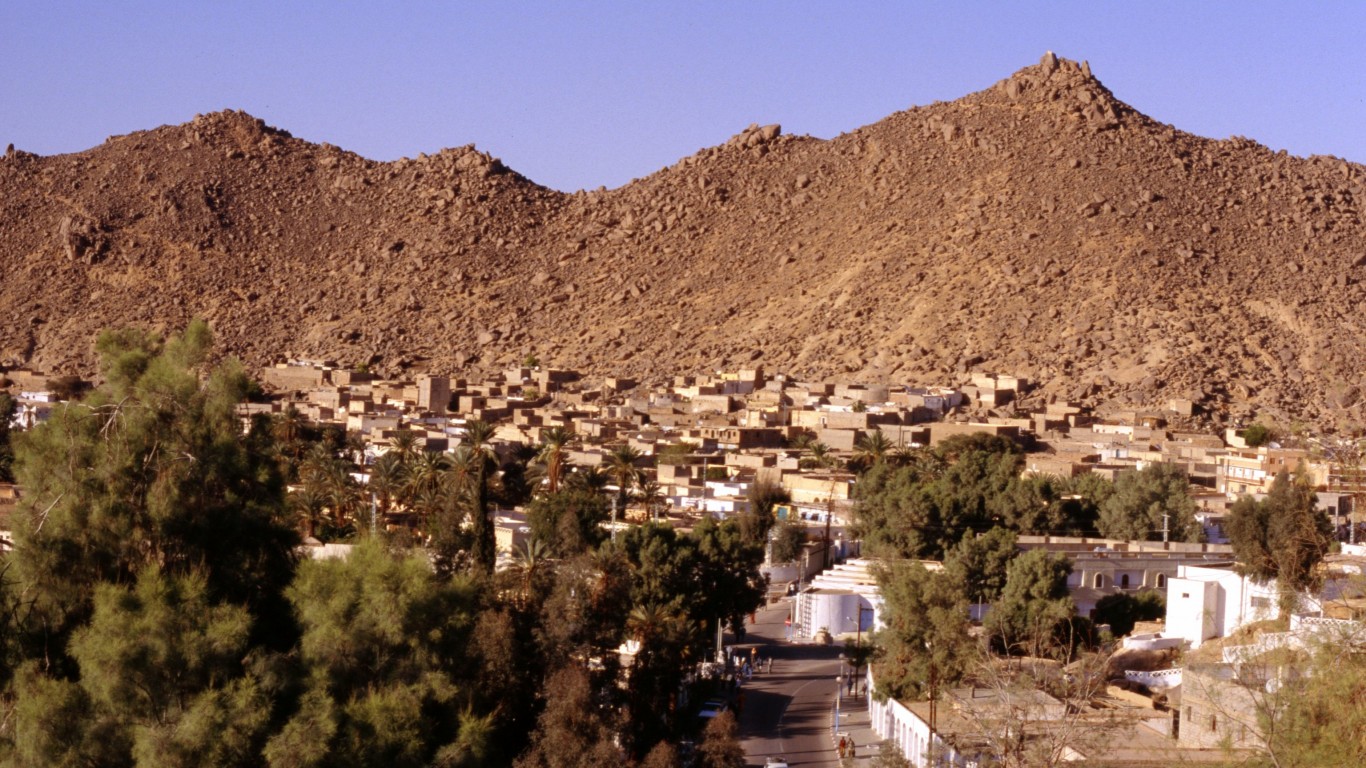
38. Illizi, Algeria
> Annual average precipitation (8 years of data): 0.9 inches
> Driest year in database: 2000, 2.4 inches
> Driest month on average: October, 0.2 inches

37. Concordia Station, Antarctica
> Annual average precipitation (22 years of data): 0.9 inches
> Driest year in database: 2018, 2.5 inches
> Driest month on average: April, 0.1 inches
[in-text-ad-2]

36. Ouargla, Algeria
> Annual average precipitation (8 years of data): 0.9 inches
> Driest year in database: 2000, 1.5 inches
> Driest month on average: October, 0.3 inches

35. Masirah Island, Oman
> Annual average precipitation (22 years of data): 0.8 inches
> Driest year in database: 1997, 4.6 inches
> Driest month on average: November, 0.2 inches
[in-text-ad]

34. Aqaba, Israel
> Annual average precipitation (22 years of data): 0.7 inches
> Driest year in database: 2018, 1.7 inches
> Driest month on average: February, 0.2 inches
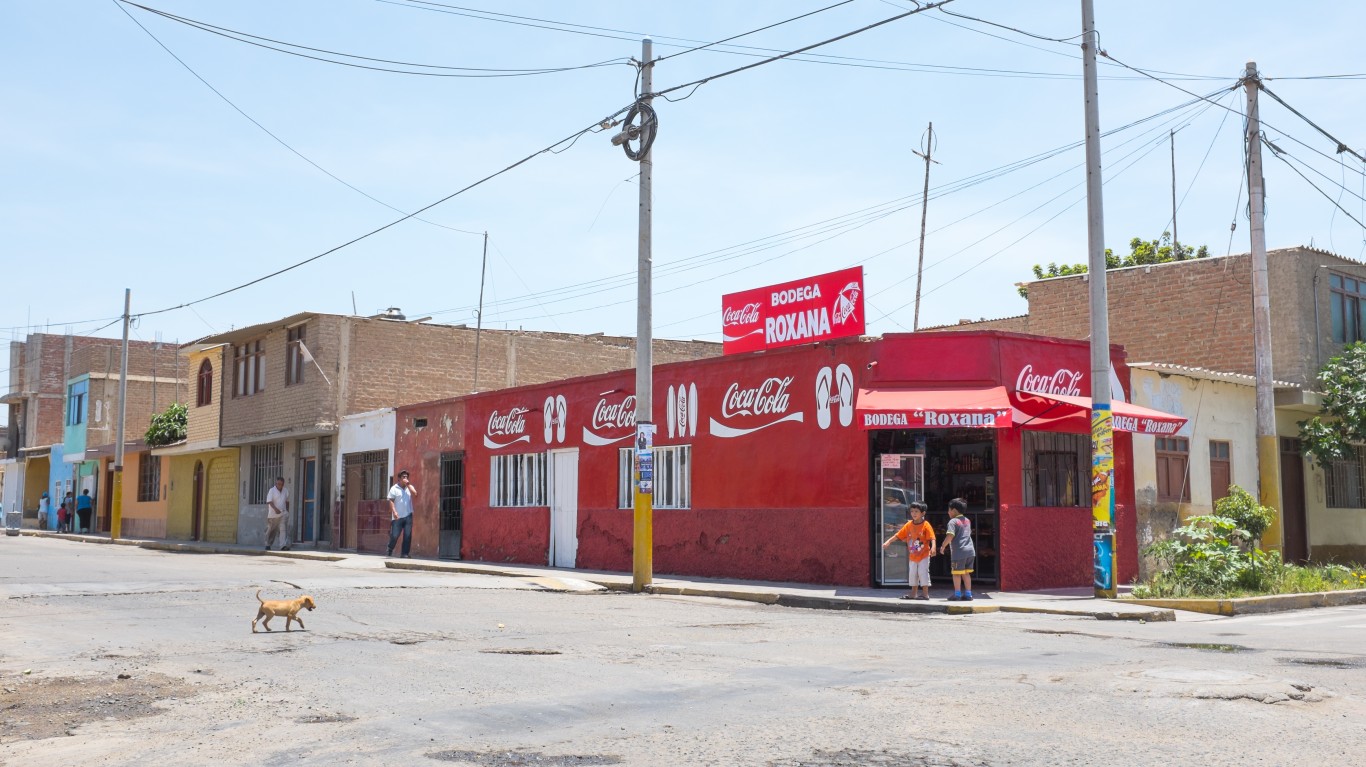
33. Chiclayo, Peru
> Annual average precipitation (20 years of data): 0.7 inches
> Driest year in database: 2008, 2.1 inches
> Driest month on average: March, 0.4 inches

32. Bir Moghrein, Mauritania
> Annual average precipitation (5 years of data): 0.7 inches
> Driest year in database: 2003, 2.2 inches
> Driest month on average: October, 2.1 inches
[in-text-ad-2]

31. In Amenas, Algeria
> Annual average precipitation (22 years of data): 0.7 inches
> Driest year in database: 2005, 3.0 inches
> Driest month on average: October, 0.2 inches
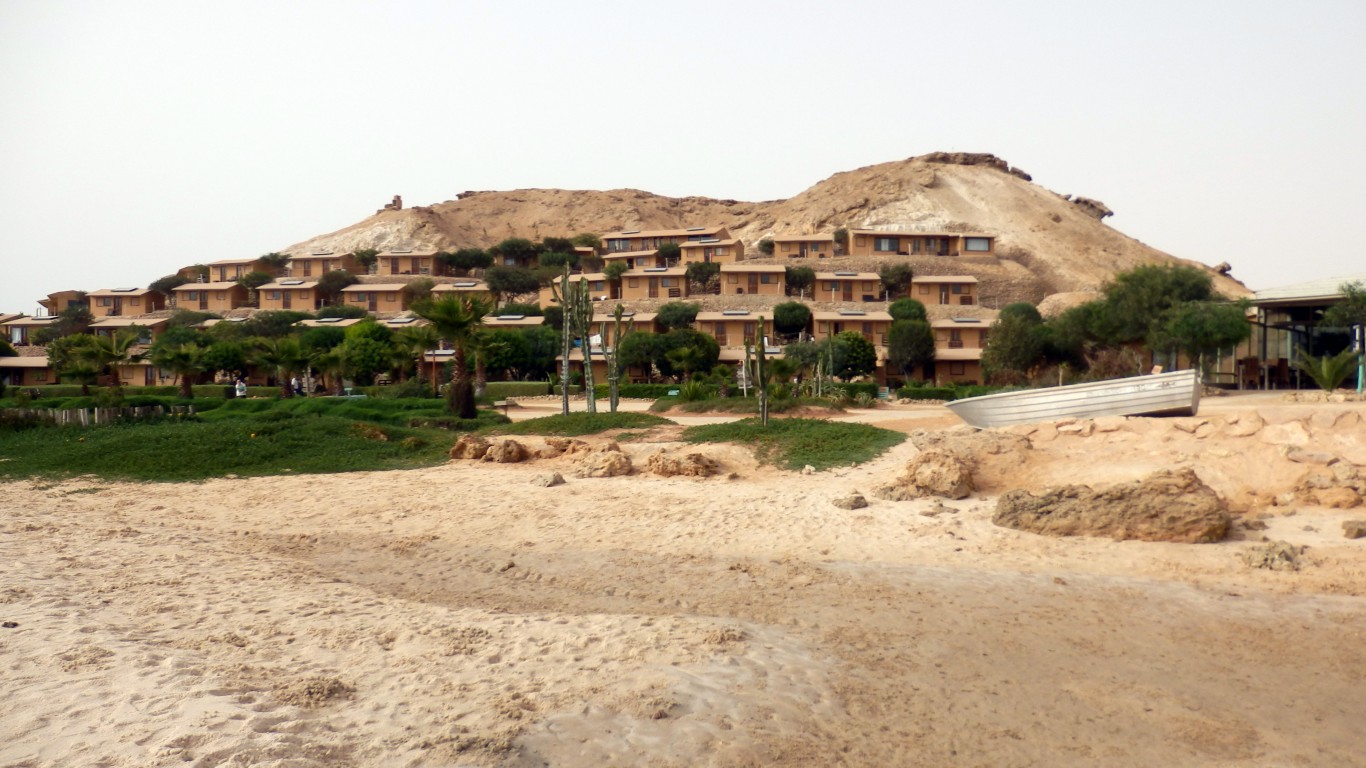
30. Dakhla, Western Sahara (Morocco)
> Annual average precipitation (22 years of data): 0.7 inches
> Driest year in database: 2005, 2.3 inches
> Driest month on average: September, 0.4 inches
[in-text-ad]

29. Helwan, Egypt
> Annual average precipitation (8 years of data): 0.7 inches
> Driest year in database: 1998, 1.3 inches
> Driest month on average: February, 0.2 inches
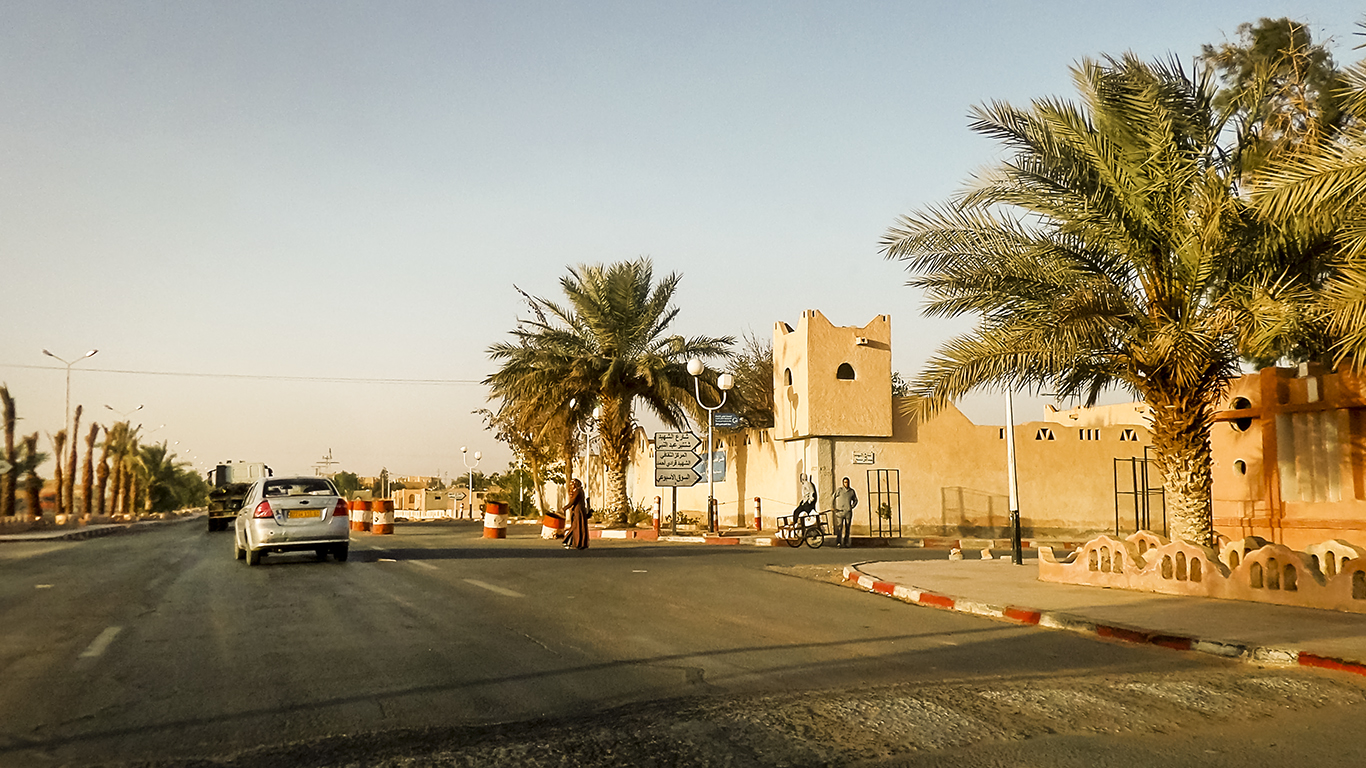
28. Hassi Fehal, Algeria
> Annual average precipitation (8 years of data): 0.7 inches
> Driest year in database: 2003, 1.4 inches
> Driest month on average: March, 0.2 inches
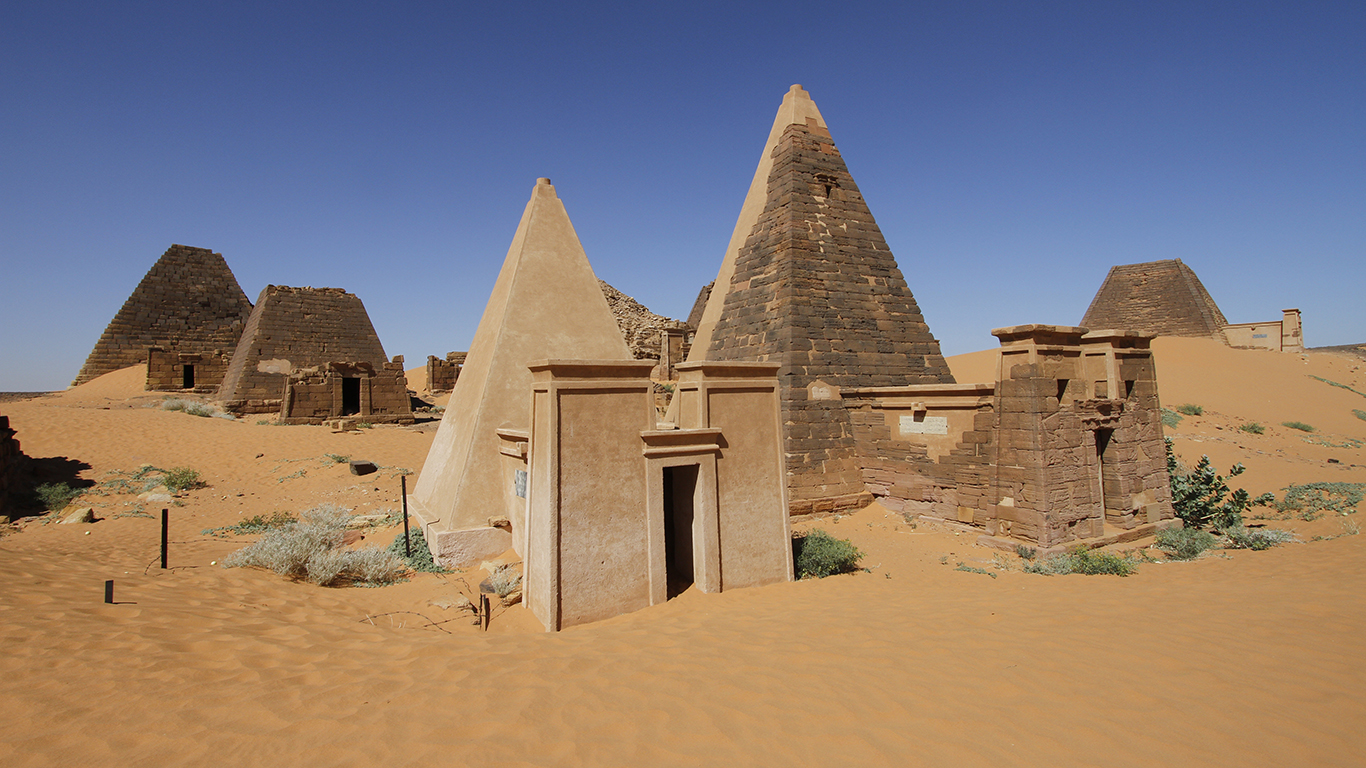
27. Merowe, Sudan
> Annual average precipitation (22 years of data): 0.6 inches
> Driest year in database: 2007, 3.1 inches
> Driest month on average: August, 0.4 inches
[in-text-ad-2]
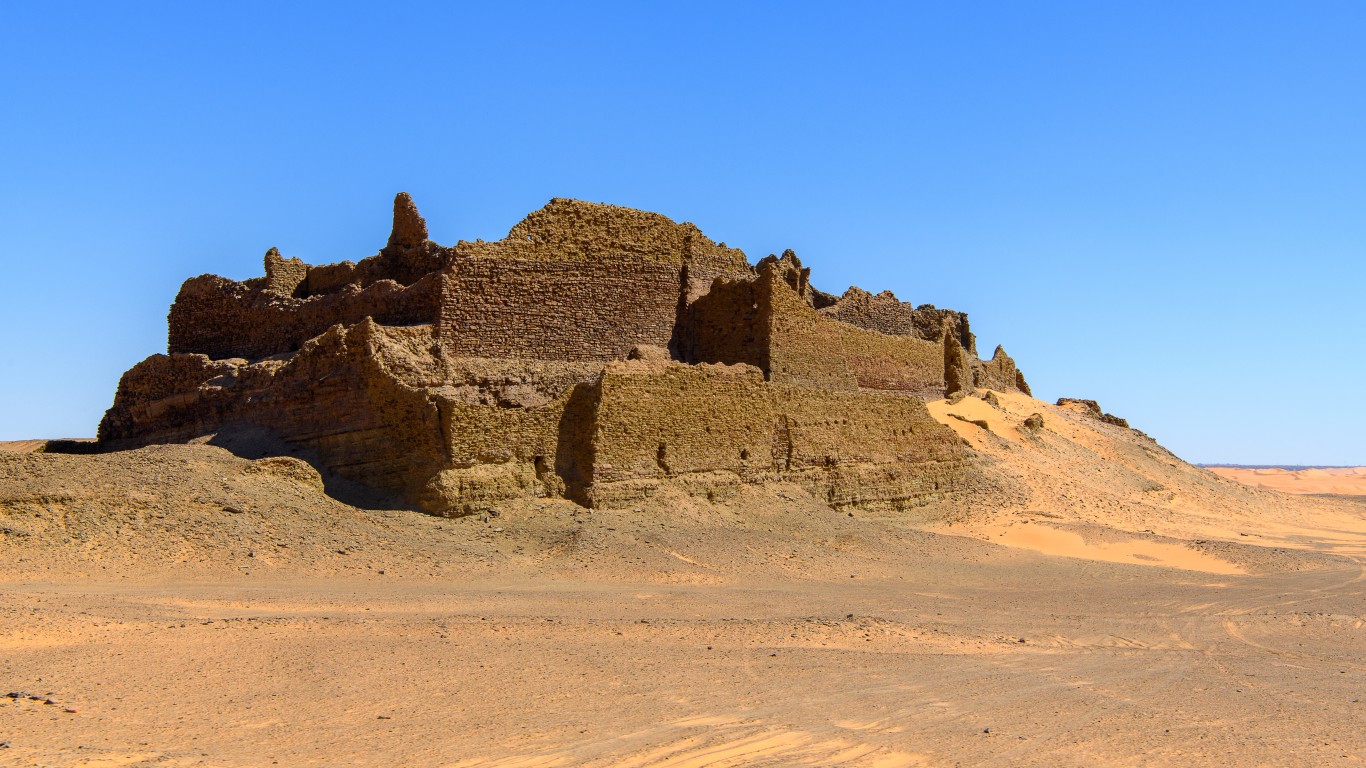
26. Adrar, Algeria
> Annual average precipitation (22 years of data): 0.5 inches
> Driest year in database: 1999, 2.1 inches
> Driest month on average: September, 0.1 inches

25. Palmeira, Cape Verde
> Annual average precipitation (11 years of data): 0.5 inches
> Driest year in database: 2016, 4.6 inches
> Driest month on average: September, 2.0 inches
[in-text-ad]

24. Thumrait, Oman
> Annual average precipitation (22 years of data): 0.5 inches
> Driest year in database: 2018, 3.6 inches
> Driest month on average: May, 0.2 inches

23. Djanet, Algeria
> Annual average precipitation (22 years of data): 0.5 inches
> Driest year in database: 2005, 2.4 inches
> Driest month on average: June, 0.1 inches
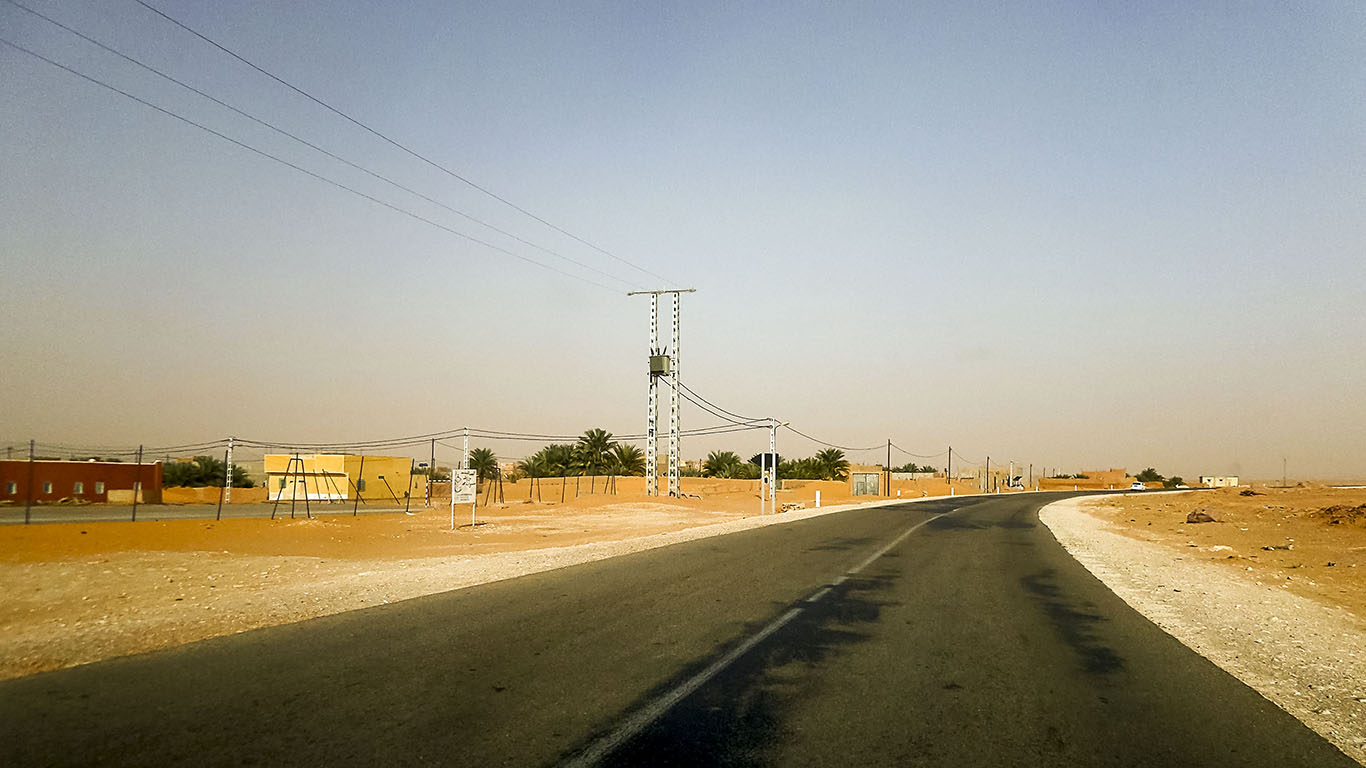
22. Azekkour, Algeria
> Annual average precipitation (22 years of data): 0.5 inches
> Driest year in database: 2008, 1.4 inches
> Driest month on average: October, 0.2 inches
[in-text-ad-2]

21. Waddan, Libya
> Annual average precipitation (17 years of data): 0.5 inches
> Driest year in database: 2013, 1.6 inches
> Driest month on average: April, 0.2 inches
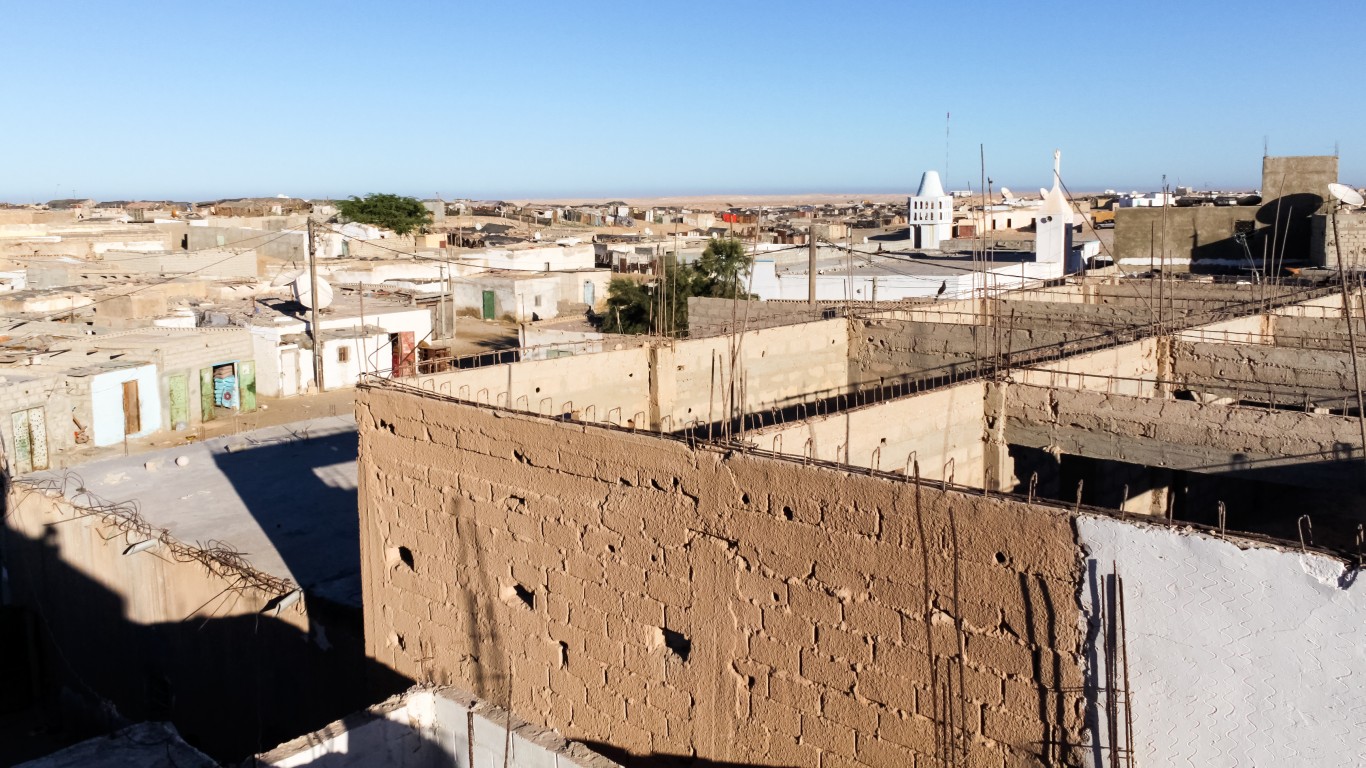
20. Nouadhibou, Mauritania
> Annual average precipitation (22 years of data): 0.4 inches
> Driest year in database: 2010, 3.7 inches
> Driest month on average: October, 0.4 inches
[in-text-ad]

19. Ain Salah, Algeria
> Annual average precipitation (22 years of data): 0.4 inches
> Driest year in database: 1999, 1.3 inches
> Driest month on average: January, 0.1 inches

18. Trujillo, Peru
> Annual average precipitation (20 years of data): 0.4 inches
> Driest year in database: 2003, 1.2 inches
> Driest month on average: February, 0.2 inches

17. Nawabshah, Pakistan
> Annual average precipitation (5 years of data): 0.4 inches
> Driest year in database: 2003, 1.6 inches
> Driest month on average: August, 0.7 inches
[in-text-ad-2]
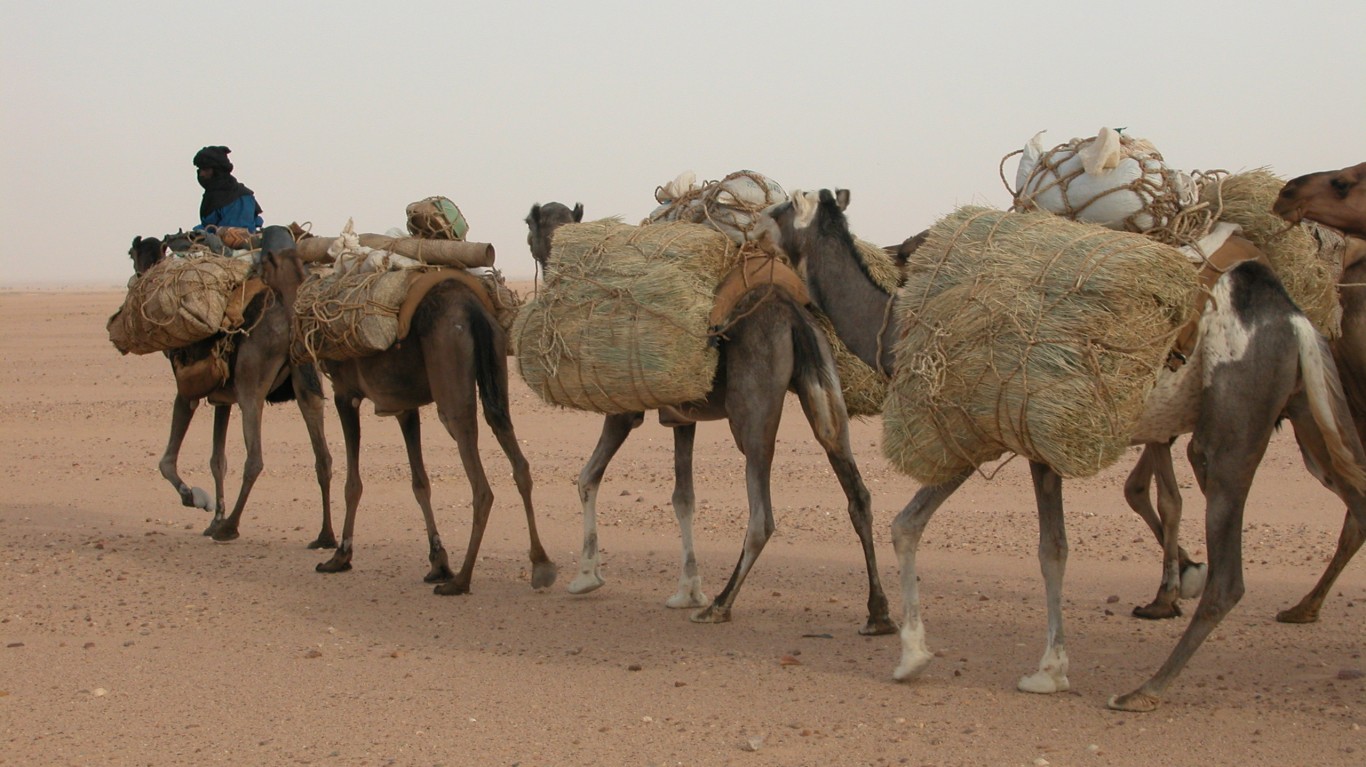
16. Bilma, Niger
> Annual average precipitation (22 years of data): 0.3 inches
> Driest year in database: 2004, 1.2 inches
> Driest month on average: August, 0.2 inches

15. Abu Hamad, Sudan
> Annual average precipitation (22 years of data): 0.3 inches
> Driest year in database: 2007, 1.5 inches
> Driest month on average: August, 0.2 inches
[in-text-ad]
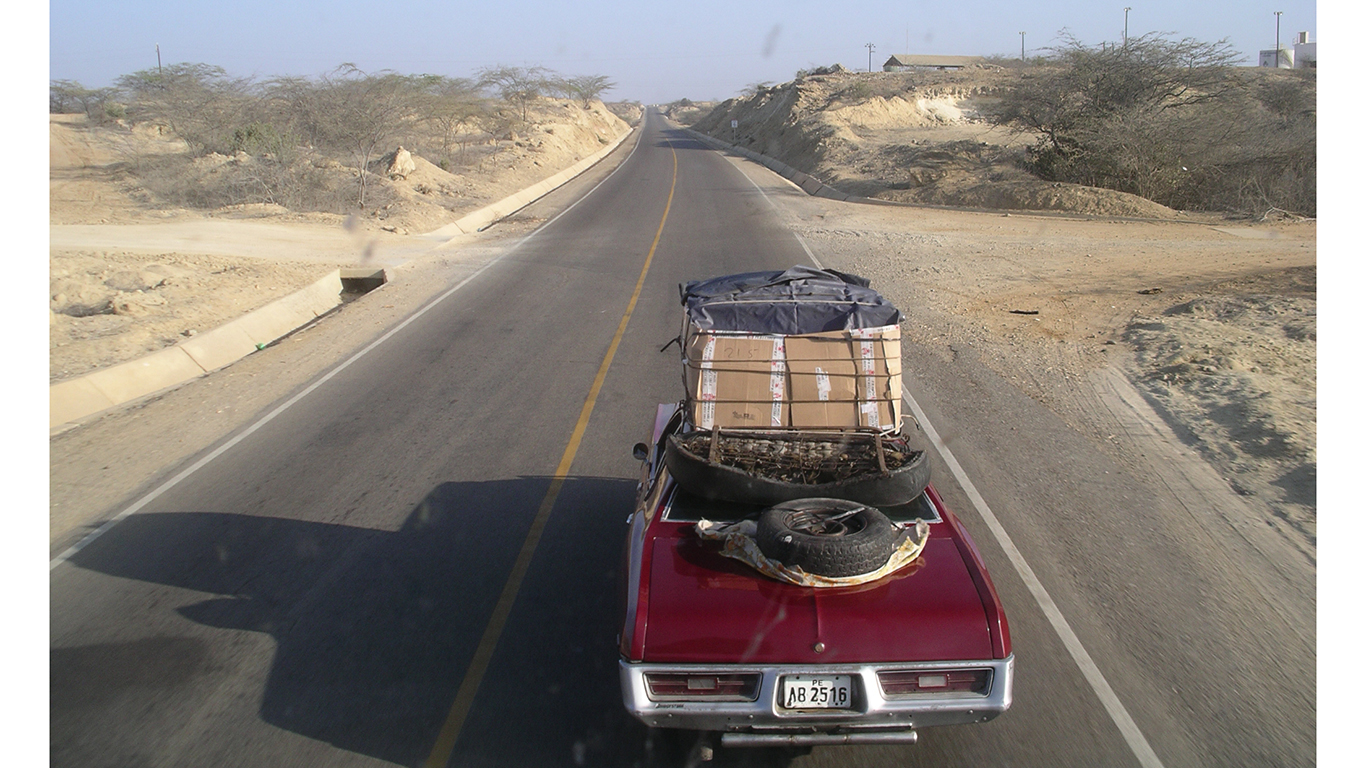
14. Talara, Peru
> Annual average precipitation (5 years of data): 0.3 inches
> Driest year in database: 1999, 0.8 inches
> Driest month on average: March, 0.6 inches

13. Dongola, Sudan
> Annual average precipitation (22 years of data): 0.3 inches
> Driest year in database: 2014, 1.3 inches
> Driest month on average: July, 0.2 inches
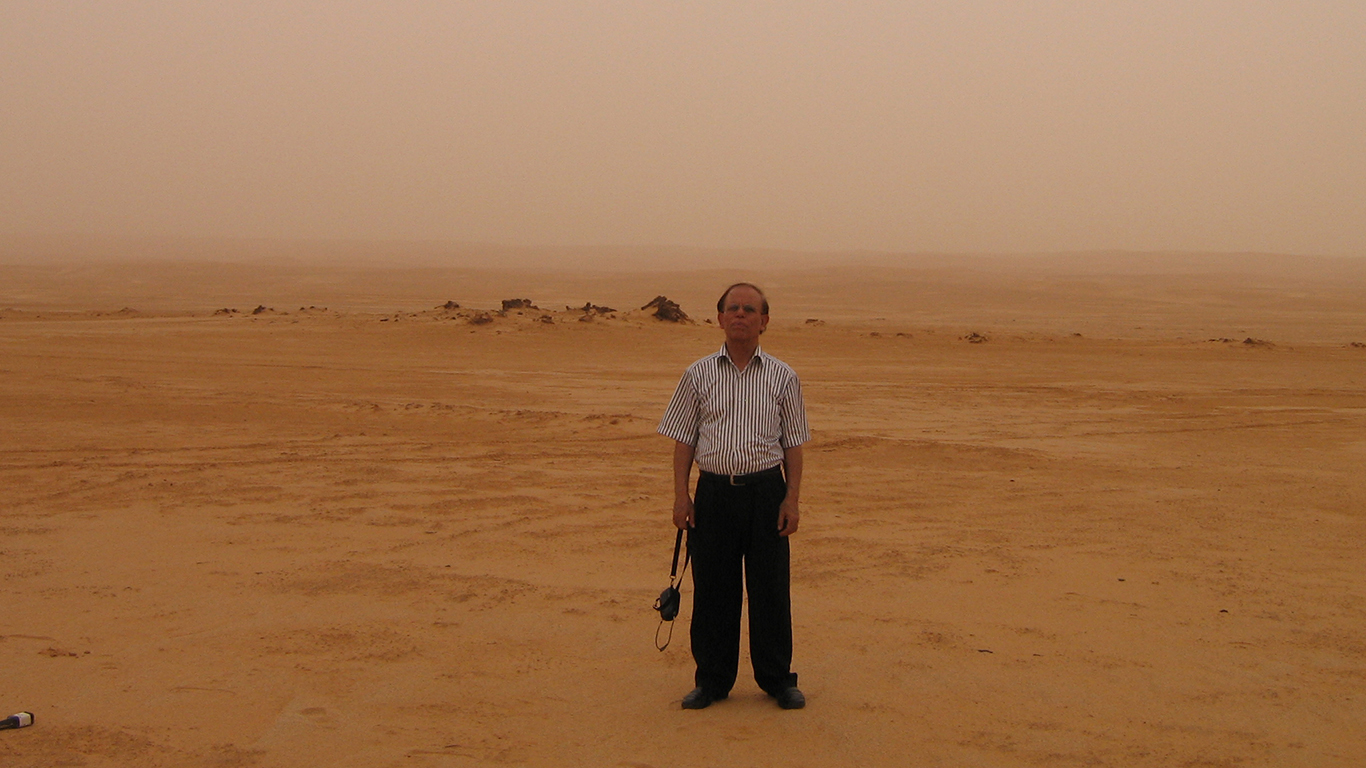
12. SabhÄ, Libya
> Annual average precipitation (18 years of data): 0.2 inches
> Driest year in database: 2013, 0.7 inches
> Driest month on average: January, 0.1 inches
[in-text-ad-2]
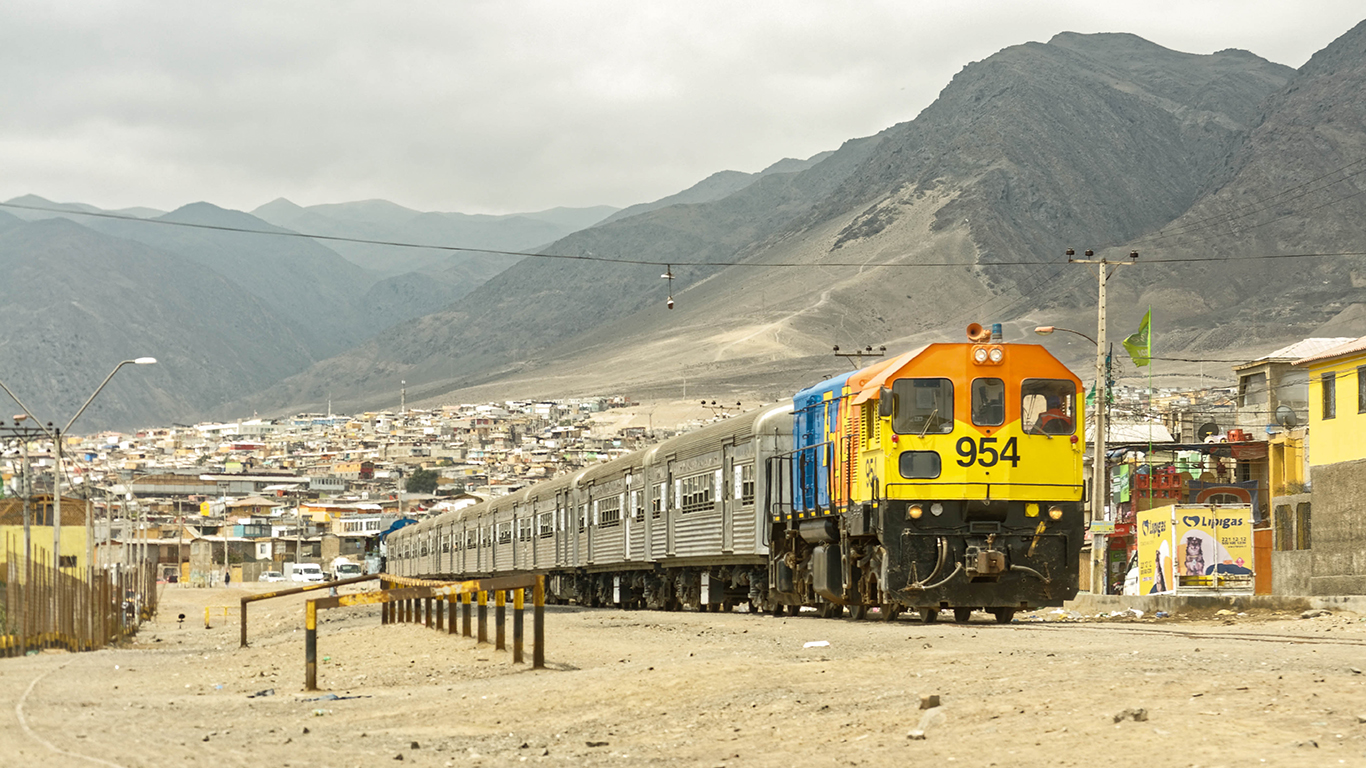
11. La Chimba, Chile
> Annual average precipitation (22 years of data): 0.2 inches
> Driest year in database: 2017, 2.0 inches
> Driest month on average: March, 0.1 inches
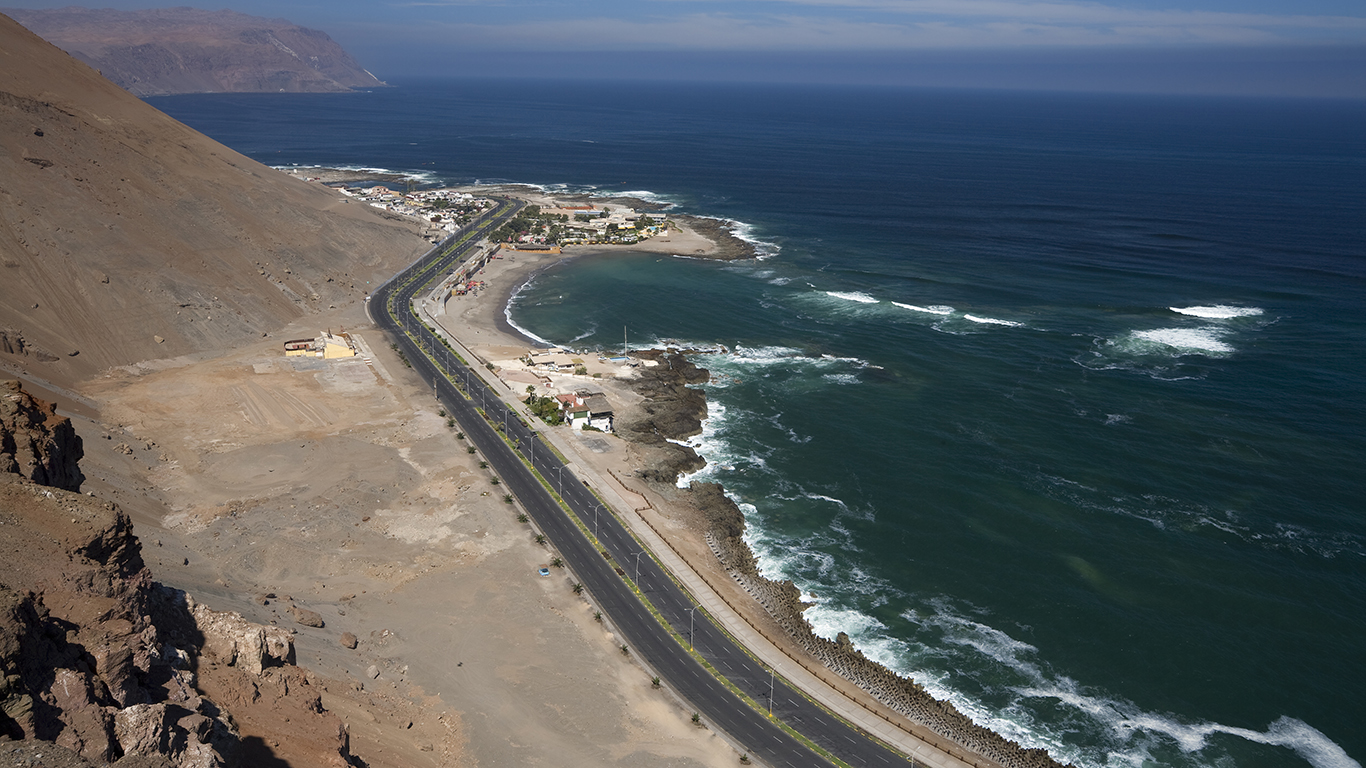
10. Arica, Chile
> Annual average precipitation (22 years of data): 0.1 inches
> Driest year in database: 2017, 1.3 inches
> Driest month on average: March, 0.1 inches
[in-text-ad]
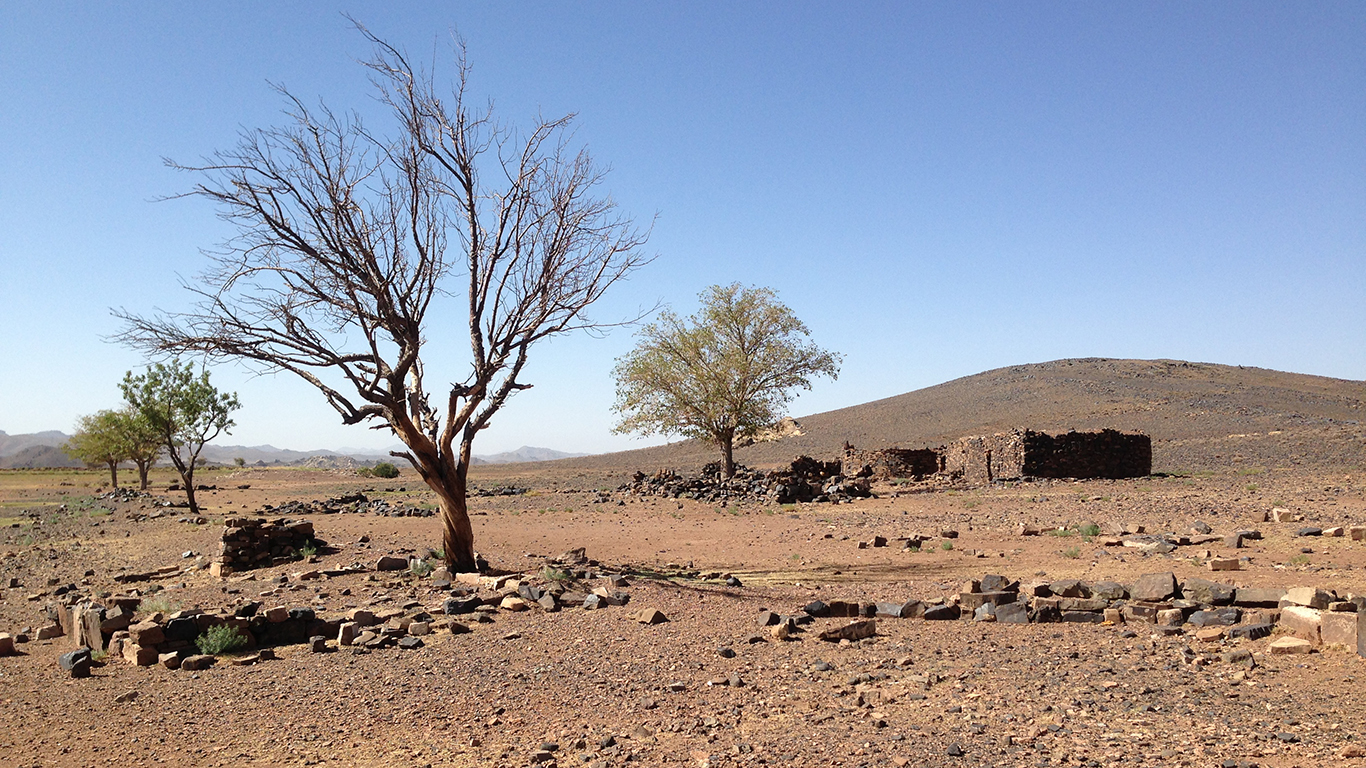
9. Nok Kundi, Pakistan
> Annual average precipitation (5 years of data): 0.1 inches
> Driest year in database: 2003, 0.3 inches
> Driest month on average: January, 0.2 inches

8. Aswan, Egypt
> Annual average precipitation (22 years of data): 0.1 inches
> Driest year in database: 2014, 0.7 inches
> Driest month on average: March, <0.0 inches

7. Kharga Oasis, Egypt
> Annual average precipitation (7 years of data): 0.1 inches
> Driest year in database: 1999, 0.2 inches
> Driest month on average: January, <0.0 inches
[in-text-ad-2]

6. Siwa Oasis, Egypt
> Annual average precipitation (6 years of data): <0.0 inches
> Driest year in database: 2001, 0.1 inches
> Driest month on average: February, <0.0 inches

5. Wadi Halfa, Sudan
> Annual average precipitation (22 years of data): <0.0 inches
> Driest year in database: 2010, 0.2 inches
> Driest month on average: August, <0.0 inches
[in-text-ad]

4. Pisco, Peru
> Annual average precipitation (19 years of data): <0.0 inches
> Driest year in database: 2011, 0.1 inches
> Driest month on average: January, <0.0 inches
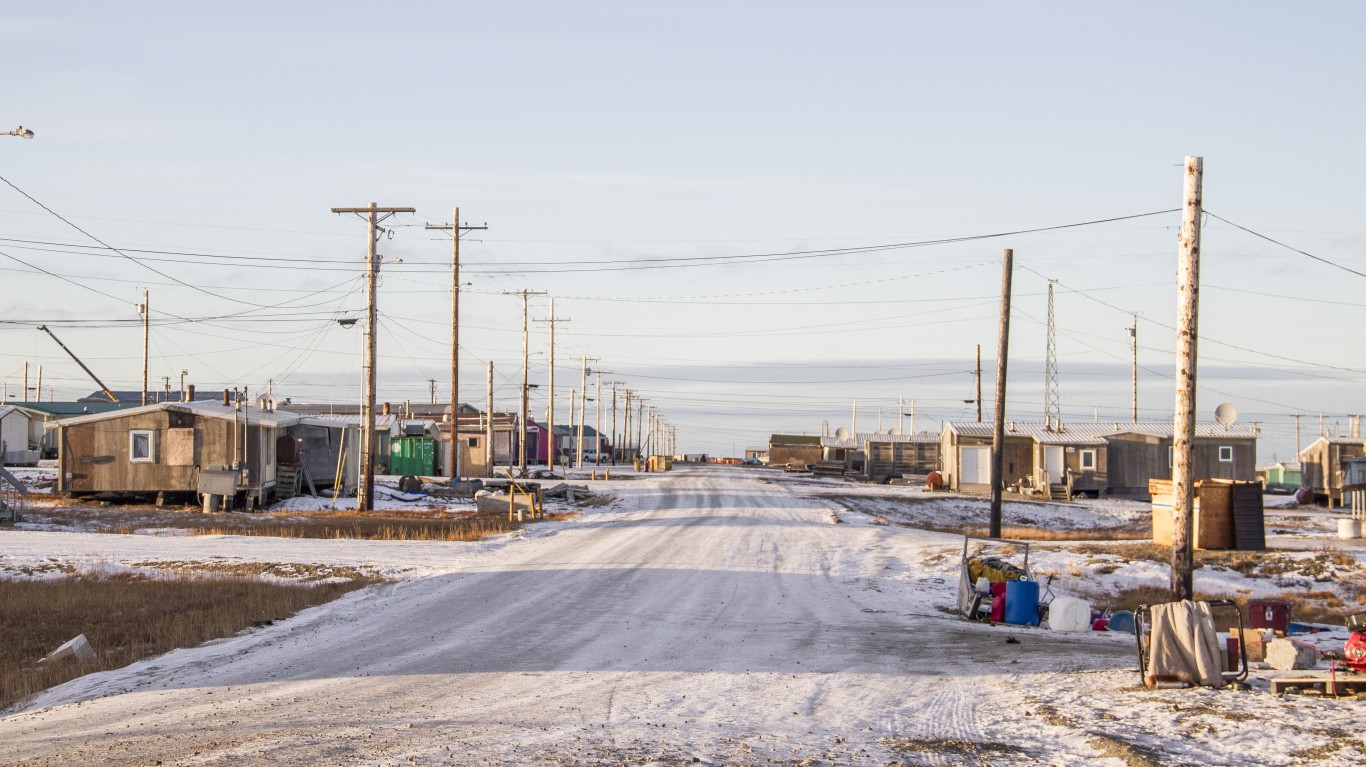
3. Kaktovik, AK, United States Of America
> Annual average precipitation (5 years of data): <0.0 inches
> Driest year in database: 1998, <0.0 inches
> Driest month on average: June, <0.0 inches

2. Chimbote, Peru
> Annual average precipitation (5 years of data): <0.0 inches
> Driest year in database: 1997, <0.0 inches
> Driest month on average: October, <0.0 inches
[in-text-ad-2]
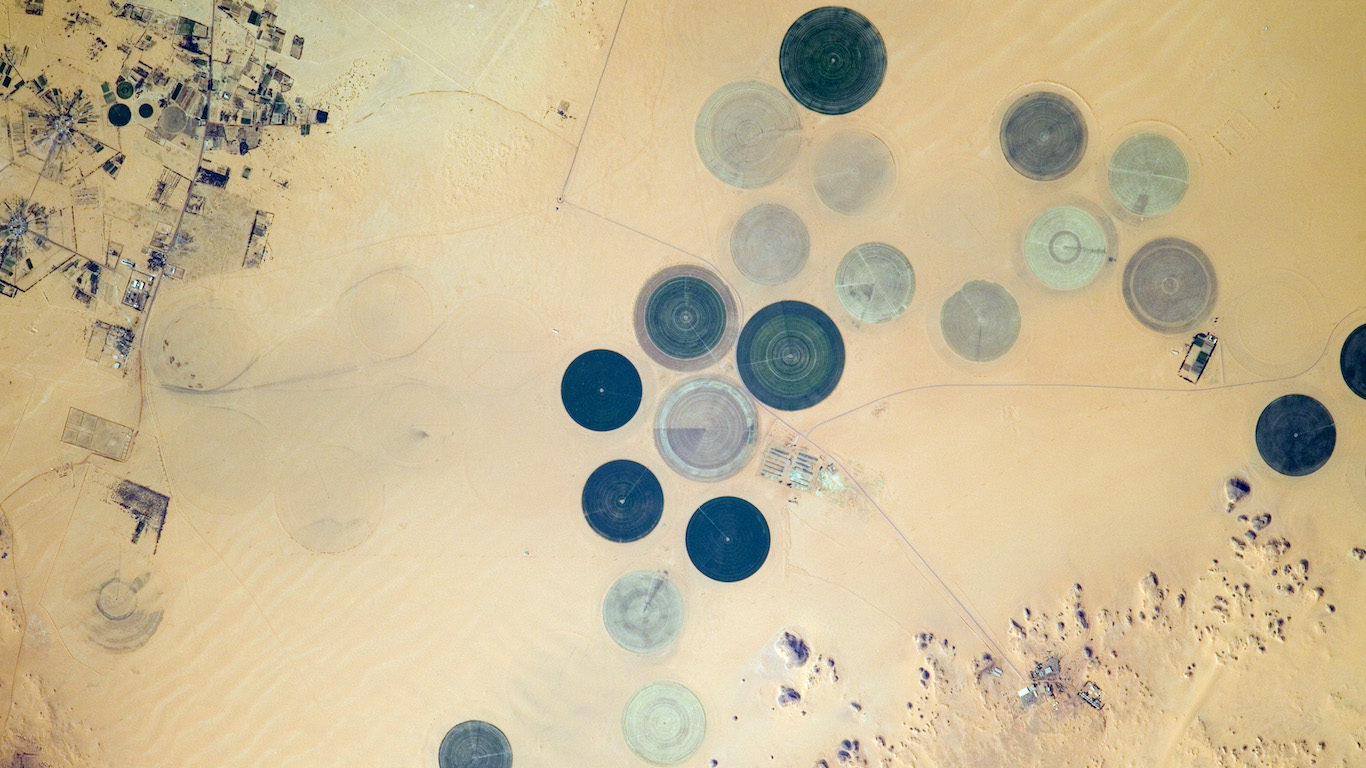
1. Al Jawf, Libya
> Annual average precipitation (12 years of data): <0.0 inches
> Driest year in database: 1997, 0.1 inches
> Driest month on average: October, <0.0 inches
Are You Still Paying With a Debit Card?
The average American spends $17,274 on debit cards a year, and it’s a HUGE mistake. First, debit cards don’t have the same fraud protections as credit cards. Once your money is gone, it’s gone. But more importantly you can actually get something back from this spending every time you swipe.
Issuers are handing out wild bonuses right now. With some you can earn up to 5% back on every purchase. That’s like getting a 5% discount on everything you buy!
Our top pick is kind of hard to imagine. Not only does it pay up to 5% back, it also includes a $200 cash back reward in the first six months, a 0% intro APR, and…. $0 annual fee. It’s quite literally free money for any one that uses a card regularly. Click here to learn more!
Flywheel Publishing has partnered with CardRatings to provide coverage of credit card products. Flywheel Publishing and CardRatings may receive a commission from card issuers.
Thank you for reading! Have some feedback for us?
Contact the 24/7 Wall St. editorial team.
 24/7 Wall St.
24/7 Wall St. 24/7 Wall St.
24/7 Wall St. 24/7 Wall St.
24/7 Wall St. 24/7 Wall St.
24/7 Wall St.



